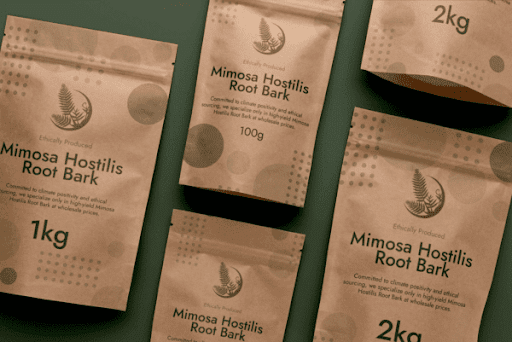Mimosa Hostilis Root Bark for Sale: A Comprehensive Guide

Mimosa hostilis, also known as Mimosa tenuiflora, is a perennial tree native to parts of South America, particularly Brazil and Mexico. The root bark of this plant has attracted attention across the globe for its unique chemical composition, traditional uses, and potential applications in various industries. If you’re searching for Mimosa hostilis root bark for sale, it’s crucial to understand the product’s background, uses, legal status, sourcing practices, and how to identify a reliable Mimosa hostilis shop.
This article will provide a detailed and well-rounded overview to guide consumers, researchers, and enthusiasts through the world of Mimosa hostilis.
H2: What is Mimosa Hostilis?
Mimosa hostilis is a fast-growing shrub or tree belonging to the Fabaceae family. It can reach up to 8 meters in height and is characterized by fern-like leaves and white or pale yellow flowers. However, it’s the root bark that has gained popularity, especially among herbalists, natural dye enthusiasts, and researchers.
H3: Botanical Background
- Scientific Name: Mimosa tenuiflora (synonym: Mimosa hostilis)
- Common Names: Jurema Preta (Brazil), Tepezcohuite (Mexico), Calumbi
- Habitat: Grows in tropical climates, especially northeastern Brazil and southern Mexico.
H2: Traditional and Modern Uses of Mimosa Hostilis Root Bark
Mimosa hostilis root bark (commonly abbreviated as MHRB) has been used for centuries, both ritually and practically. Let’s explore the most common applications:
H3: Traditional Healing and Spiritual Use
Indigenous groups in Brazil and Mexico have used MHRB in spiritual ceremonies and as part of healing rituals. The bark was often brewed into teas or pastes, used to promote wound healing, reduce inflammation, and cleanse the skin.
In shamanic traditions, MHRB has been employed for its psychoactive properties due to the presence of the naturally occurring compound DMT (dimethyltryptamine), which, when combined with an MAOI (monoamine oxidase inhibitor), can induce visionary states.
H3: Natural Dye and Tanning Industry
One of the most popular modern uses for MHRB is in the textile and leather industries. The root bark contains high levels of tannins, making it a strong natural dye:
- Produces deep purple, brown, or reddish hues.
- Used for eco-friendly, chemical-free textile dyeing.
- Common in leather tanning processes due to its astringent properties.
H3: Skincare and Cosmetics
In regions like Mexico, powdered MHRB bark (often called “Tepezcohuite”) is widely used in topical skincare products. Its antimicrobial and regenerative properties have led to its inclusion in:
- Anti-aging creams
- Burn and scar treatment ointments
- Acne-fighting cleansers
H2: Chemical Composition of Mimosa Hostilis Root Bark
The root bark of Mimosa hostilis is rich in natural compounds. Some of the most notable include:
- Tannins: Astringent compounds ideal for wound care and dyeing.
- Flavonoids: Provide antioxidant benefits.
- Alkaloids: Most notably N,N-Dimethyltryptamine (DMT), a potent natural psychedelic.
It’s important to note that DMT is a Schedule I substance in many countries, including the U.S., making its extraction or consumption illegal without appropriate licenses or religious exemption.
H2: Legal Considerations
Before purchasing from any Mimosa hostilis shop, it’s essential to understand the legal status of the root bark in your region.
H3: United States
- Raw MHRB: Legal to buy, sell, and possess for purposes such as dyeing, research, or educational use.
- DMT extraction or consumption: Illegal under federal law without DEA authorization.
H3: International Laws
- Canada & UK: Similar to the U.S.; raw plant materials are often legal, but extraction or use of DMT is prohibited.
- Brazil & Mexico: Native countries with varied traditional and cultural use laws. Export may be restricted without permits.
Always check local and national laws before purchasing or using Mimosa hostilis root bark.
H2: Where to Find Quality Mimosa Hostilis Root Bark for Sale
With the growing interest in plant-based products, many vendors now offer MHRB online. However, quality and ethical sourcing vary significantly. When seeking Mimosa hostilis root bark for sale, consider the following:
H3: Ethical and Sustainable Harvesting
- Ensure the vendor practices sustainable harvesting, preserving the tree’s life and surrounding ecosystem.
- Look for wild-harvested MHRB from its native regions (Brazil or Mexico).
- Avoid shops that offer suspiciously cheap prices or lack transparency.
H3: Forms Available
Most vendors provide MHRB in the following forms:
- Whole bark: Long strips of dried root bark.
- Shredded bark: Easier to prepare for dyeing or extraction.
- Powdered bark: Ideal for cosmetic or topical formulations.
Each form has specific advantages depending on your intended use.
H3: Choosing a Reliable Mimosa Hostilis Shop
When selecting a Mimosa hostilis shop, keep the following in mind:
- Reputation: Read customer reviews and check forums like Reddit or Shroomery for vendor feedback.
- Transparency: A reliable shop will provide information about sourcing, quality control, and intended use.
- Shipping and Discretion: Ensure they ship to your country and offer discreet packaging.
- Lab Testing: Some premium vendors provide lab results verifying purity and absence of contaminants.
H2: How to Use Mimosa Hostilis Root Bark Safely and Legally
Even if purchasing MHRB is legal in your region, how you use it matters:
- Textile dyeing: Soak shredded or powdered bark in warm water or an acidic solution to extract tannins and pigments.
- Topical use: Infuse into oils or balms, but always conduct a patch test.
- Research use: Follow all institutional guidelines if using in academic or lab settings.
Never attempt to extract DMT unless you have the legal authority to do so. Unauthorized extraction is both illegal and potentially dangerous.
H2: Final Thoughts
Mimosa hostilis root bark is a powerful and versatile natural material with a rich cultural history and wide-ranging applications. Whether you’re a textile artist, natural medicine enthusiast, or researcher, it’s critical to understand the source, legality, and proper usage of this botanical.
Finding Mimosa hostilis root bark for sale is relatively easy in today’s online world, but finding high-quality, ethically-sourced bark from a trustworthy Mimosa hostilis shop takes a bit more care and diligence.
Always prioritize sustainability, legality, and safety in your MHRB journey.





